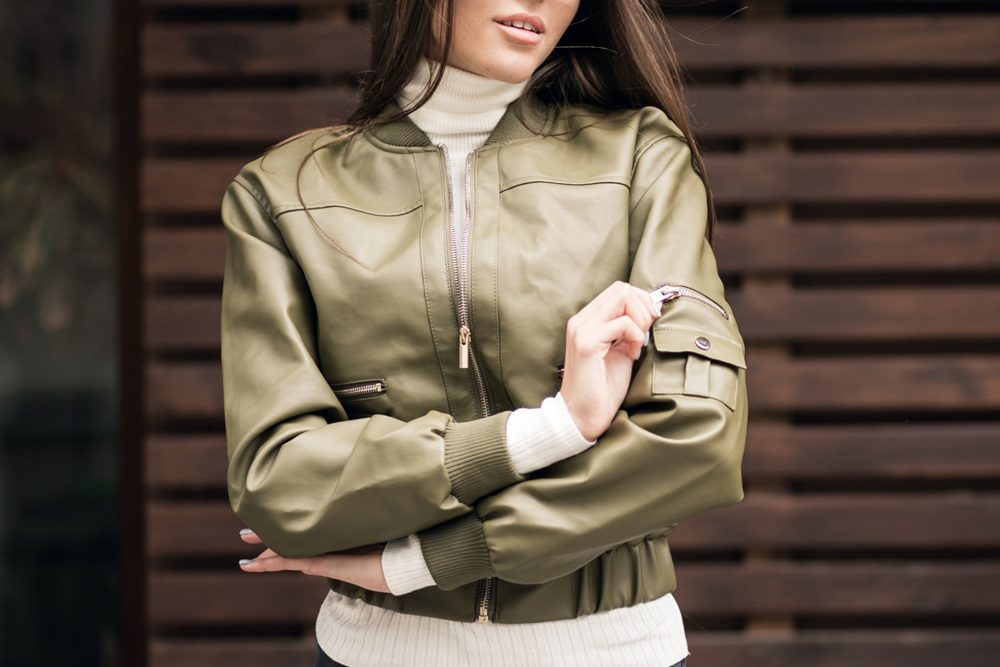Preserving that rich, worn-in character of your leather jacket is half the reason you bought it in the first place. Nothing matches the confidence you feel when the grain catches the light just right, until one day you notice the surface starting to peel. Tiny flakes appear on the collar, the sleeves look scuffed, and suddenly that statement piece feels fragile instead of formidable.
If you’re seeing those first warning signs, don’t panic. Leather doesn’t peel overnight, and with the right care, you can slow (or even stop) the damage before it spreads. In this guide, we walk you through the reasons behind peeling, the everyday mistakes that speed it up, and the best ways to protect your jacket going forward.
When it comes to leather care, using the wrong soap or detergent is one of the fastest ways to ruin your jacket. Many people think any soap or even their regular laundry detergent will work, but leather is not like other fabrics.
It has a delicate surface that reacts badly to strong chemicals, especially those designed to strip oils and break down tough stains on clothing. Once those protective oils are gone, the leather dries out, cracks, and eventually starts to peel.
Harsh soaps and detergents often contain strong surfactants and enzymes that are great for cutting through grease on cotton shirts or removing oil from towels, but they’re too aggressive for leather. Here’s what you need to know:
Pro Tip: To avoid these issues, always choose a specialized leather cleaner or a mild soap designed for delicate items, and always dilute it properly.
It’s easy to think “a good scrub” is the solution for stubborn dirt, but leather doesn’t respond well to aggressive cleaning. Scrubbing too hard, especially with rough brushes or abrasive sponges, can actually do far more harm than good. It wears away the finish and protective coatings, exposing the raw leather beneath and setting the stage for peeling and cracking.
When you scrub leather too hard, you don’t just remove surface dirt. Here’s why gentle cleaning is always better:
Pro Tip: Instead, opt for a soft-bristle brush or microfiber cloth and use light, circular motions. This method helps lift dirt without compromising the jacket’s protective layers.
Water is another misunderstood enemy of leather jackets. While a lightly damp cloth is helpful for gentle cleaning, soaking or overwetting leather can quietly set off a series of problems that aren’t obvious right away.
Leather is naturally porous and can hold on to more water than you might expect, making it especially vulnerable to improper cleaning habits. Learning what really happens when leather gets too wet will help you avoid serious damage and future peeling.
When leather absorbs too much water, several hidden issues start to build up beneath the surface:
Pro Tip: Always use only a lightly dampened microfiber or cotton towel when cleaning, and never soak any part of the jacket. If it does get too wet, gently blot with a dry towel and let it air dry away from direct heat or sunlight.
Trying to disinfect or deep-clean your jacket using alcohol or bleach-based cleaners is a big mistake. While these products can kill bacteria and remove some types of stains on other surfaces, they are far too harsh for leather. They break down the finish and cause severe drying, which is a direct path to peeling and cracking.
These substances are among the most damaging you can apply to leather. Let’s break it down:
Pro Tip: If you’re dealing with ink, oil, or grease stains, there are safer methods. For example, using a leather-specific cleaner or spot treatment designed for delicate materials can handle tough marks without causing deeper damage.
Cleaning your leather jacket is only half of the maintenance process; conditioning is equally important. Many people forget this final step or think it’s optional, but it plays a crucial role in keeping the jacket supple and protected.
Without conditioning, the leather gradually loses its natural oils, leading to dryness, stiffness, and, you guessed it, peeling.
Conditioning leather isn’t just about making it look shiny. It restores moisture and flexibility, keeping the jacket in top shape. Here’s what you should keep in mind:
Pro Tip: To condition your leather jacket, apply a small amount of a high-quality leather conditioner specifically designed for jackets. Use a soft microfiber or cotton cloth and spread it evenly in light, circular motions. Let it absorb fully before wearing or storing.

Prevention is powerful. Let us protect your leather before the damage deepens. At Major Cleaners in Greenville, South Carolina, we specialize in a premium Leather and Suede Cleaning Service designed to restore that timeless appeal and protect lasting quality.
Our team has years of hands-on experience with all types of leather, from everyday jackets to high-end suede and specialty items. We use gentle, moisture-restoring treatments to help reduce peeling, stiffness, and discoloration.
Call us at (864) 675-9499, email info@majorcleaners.com, or book online. Prefer to visit in person? Visit us at 201 Wade Hampton Boulevard, Greenville, South Carolina, 29609 — we’re here to help!
